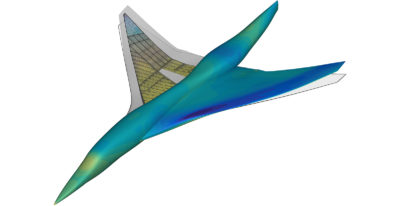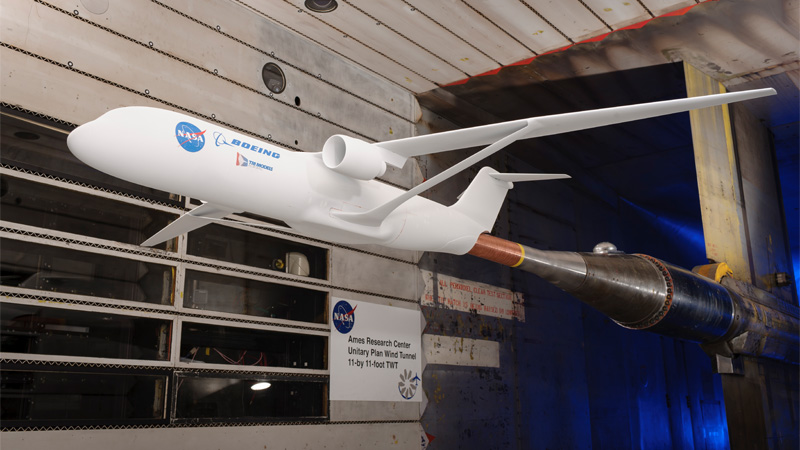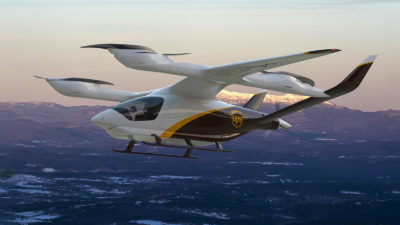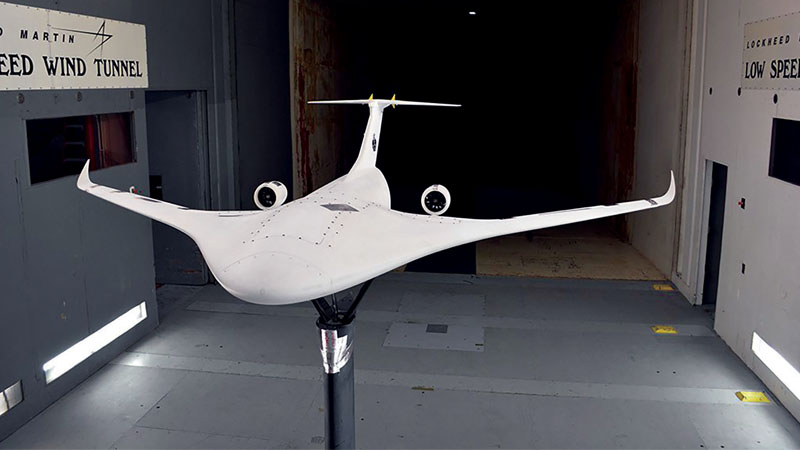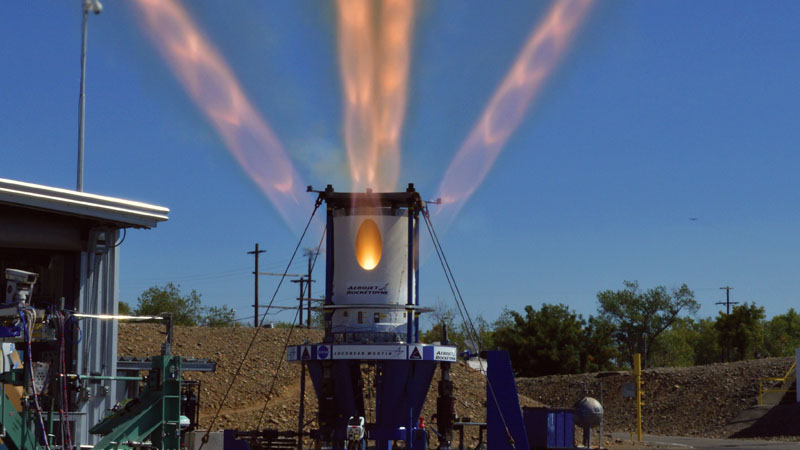Exceptional year for R&D in structural dynamics
By D. TODD GRIFFITH AND NATHAN FALKIEWICZ|December 2017
The Structural Dynamics Technical Committee focuses on the interactions among a host of forces on aircraft, rocket and spacecraft structures.
There was much activity in Europe as the first phase of the Clean Sky Program drew to a close, focusing on experimental demonstrations of breakthrough technologies in advanced aerodynamics and in loads control and alleviation.
Key tests included those in early 2017 on the Experimental Transonic Investigations on Laminar Flow and Load Alleviation, or ETRIOLLA, demonstrator, a 5.8-meter scaled wing model tested in the ONERA S1 tunnel in Modane, France, in early 2017. This model demonstrated an extended natural laminar flow region at the cruise design point of Mach 0.74. The model was also equipped with trailing edge loads control devices to effect drag reduction in off-design steady conditions at different points in the flight envelope.
Project GLAMOUR, short for Gust Load Alleviation Techniques Assessment on Wind Tunnel Model of Advanced Regional Aircraft, demonstrated active gust loads alleviation using a unique half aircraft model (2.8-meter semi-span), with multicontrol surfaces on the wings and tail, manufactured and tested at the Politecnico di Milano in Italy. Of particular note was the ability to enable pitch and plunge motions using a specially designed control system and also the use of bespoke gust generators. Several novel control algorithms were developed, and it was concluded that gust loads alleviation technologies are going to be very important for the next generation of transport aircraft.
The Lincoln Laboratory at the Massachusetts Institute of Technology in April completed a system-level vibration test campaign on the cameras and associated hardware for TESS, the Transiting Exoplanet Survey Satellite, which is slated for launch in March 2018. TESS is an Explorer-class planet finder and will conduct the first spaceborne all-sky transit survey. The principal goal of the mission is to detect small planets with bright host stars in the solar neighborhood. The test campaign included subjecting the hardware to both sine and random vibration environments to demonstrate the hardware’s capability to withstand launch loads. A variety of real-time limit criteria were implemented, including force limits at the base and response limits at various points across the structure. Compliance with traditional random vibration environments, limit load criteria and angular acceleration requirements was achieved through a combination of testing and analysis. The program is led by the MIT Kavli Institute with NASA’s Goddard Space Flight Center in Maryland providing program management and Orbital ATK supplying the spacecraft and mission operations support.
In the launch vehicle area, structural testing of large segments of NASA’s Space Launch System is providing engineers with confirmation of vehicle design parameters to assure future mission success. In June, one such segment, the Integrated Spacecraft and Payload Element, completed four months of testing. The primary objective of the ISPE testing was the measurement of stresses and internal loads throughout the full assembly as predicted external flight loads were applied. Secondary objectives involved measuring modal responses — how the structure reverberates in response to being shaken and tapped. These modal responses were then compared to predictions from math models, and where necessary, the math models of the ISPE components were adjusted to match the test results. The updated math models will be used in the next loads analysis cycle of the complete SLS vehicle to provide more accurate vehicle-level loads predictions. The SLS program is led by NASA’s Marshall Space Flight Center in Alabama.
A newly formed strategic partnership between Airbus and the University of Michigan led to establishment in June of a center to investigate new methods and computational techniques for designing and evaluating future aircraft configurations. The new Airbus-University of Michigan Center for Aero-Servo-Elasticity for Very Flexible Aircraft will develop new computational tools that will explore new design options and reap the benefits of long wingspan configurations while mitigating the new aero-servo-elastic challenges. The fundamental research questions being addressed explore new uncharted territory in commercial transport aircraft configurations while developing the appropriate computational methods, algorithms and tools.


